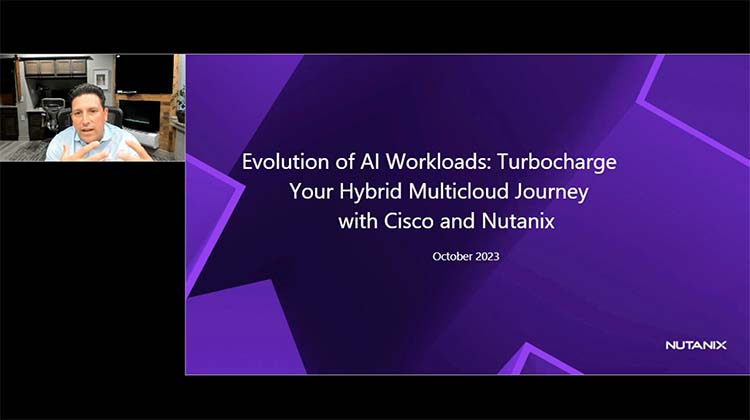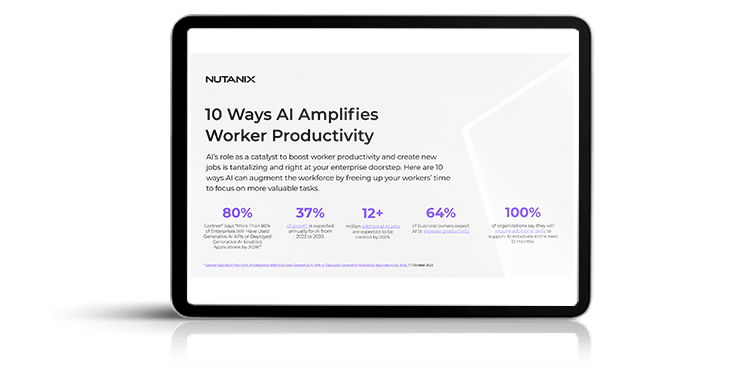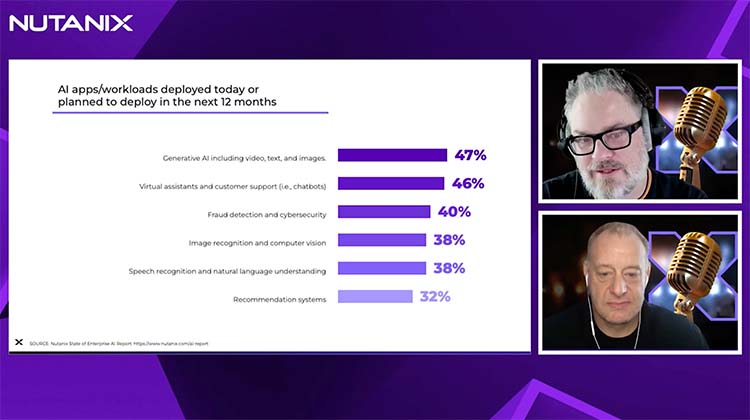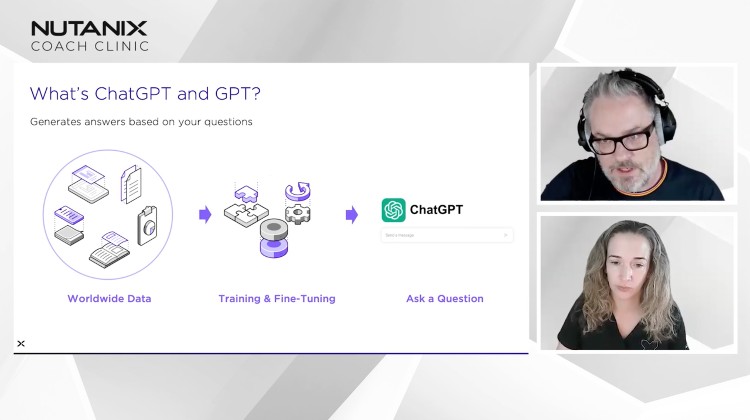What is artificial intelligence (AI)?
Artificial intelligence (AI) encompasses a wide array of technologies, applications, and systems aimed at enabling computers and machines to replicate human-like abilities such as reasoning, decision-making, and problem-solving. AI draws upon various disciplines including advanced computer science, data analysis, software engineering, natural language processing, computer vision, speech recognition, and neural networks, as well as fields like psychology and philosophy.
Through AI, organisations can extract valuable insights from vast amounts of data collected across their operations. AI platforms are capable of analysing this data, uncovering correlations, pinpointing root causes of issues, providing recommendations for system or process improvements, and performing numerous other tasks.
How does AI work?
AI relies on algorithms and data, where algorithms serve as instructions guiding a machine or computer program on how to analyse information, make decisions, and exhibit certain behaviours. For example, a machine learning algorithm could assist an application in analysing extensive text conversations to learn human interaction patterns, or train a program to identify specific images from a vast array of random photos.
In order to become proficient, AI applications require extensive training data containing examples of conversational language or relevant image types. Once trained, AI applications or programs can analyse data, establish connections between events and outcomes, automate tasks, and more.
Typically, AI involves the following five steps:
- Input – This is the data that will be analysed. It’s typically collected from all over an organisation, from customer account information to historical archives of past business deals to financial information from accountants and billing specialists.
- Processing – The data is sorted and parsed to identify patterns and correlations where they exist.
- Outcome – An AI program will then use identified patterns and correlations to make predictions about possible outcomes. For example, AI in a retail setting could look at past holiday periods and sales volumes and make predictions about how many staff will be needed for the next holiday season.
- Adjustment – Part of training is getting a “fail,” where the AI program makes the wrong decision or inaccurately identifies a correlation or pattern. The program learns from the mistake and the training goes on, presenting a scenario hundreds or thousands of times under varying criteria until the program gets it right. For instance, Deep Mind played hundreds of thousands of chess games and learned to identify the moves and circumstances that led to victory.
- Assessment – Once the AI program has learned to make the right predictions or identify accurate patterns, it can assess the process and compare its results with other machines or human subjects. It can assess the entire process to create benchmarks for its skills and level of intelligence.
Why is AI important?
AI is important because it has the power to revolutionise the way we do business and the way we live. It’s more than simply automating processes to help people save time and effort—it can identify patterns and see correlations at a level and speed that humans can’t match. AI can take millions or even billions of data points and come up with insights that a team of researchers never could.
Consider risk management in a financial institution, for instance. Retail customers apply for merchant accounts that allow them to accept credit cards as payment for goods or services. The bank must vet these applications and determine whether the retailer is high risk. It could take a human agent days to process an application and make that determination for each retailer. With the right AI program, a computer system can process an application in seconds. It can go through an immense number of data points about that retailer and know in a flash whether they’re a good risk.
AI is increasingly used across enterprises to enhance efficiency and productivity. It can significantly improve decision making and problem solving and give organisations important insights that lead to innovation.
What is the role of AI in cloud computing?
AI can be a great advantage when it comes to cloud computing. The main area where AI works well in the cloud is in the automation of processes and IT tasks. By automating tedious everyday tasks with smart AI-based platforms, IT can be freed up to focus on projects that help build the business.
Today’s hyperscalers, or leading cloud providers such as AWS, Azure, and Google Cloud, are investing in AI technologies and developing algorithms to offer customers the most advanced AI capabilities in the cloud. Because AI applications come with extra-massive data requirements, it’s only natural that a lot of these applications would be used in the cloud—where many organisations enjoy plenty of room for data storage and can scale up or down as quickly as needed.
Advantages of combining AI with cloud computing
- Cost savings – Thanks to virtualisation technology, the cost of machine learning has come way down and organisations can train AI programs using standard infrastructure in the cloud.
- Increased productivity – Testing AI algorithms is more efficient in the cloud because IT doesn’t have to build or manage the on-premises infrastructure.
- Easy automation – AI capabilities can be integrated directly into cloud services and applications; they can also be used to monitor, manage, and optimise cloud environments.
- Simple access for analytics – With more organisations using the cloud for data storage, AI features can help applications parse online data in real time and get to insights faster.
- More efficient data management – AI capabilities in cloud management systems can streamline and automate management processes for more efficient operations.
- Improved cloud services – Incorporating AI capabilities into existing cloud services or software-as-a-service offerings can improve user experiences and offer innovative value-added services.
AI in the IT industry
Within IT infrastructure, AI plays a crucial role in streamlining network management, optimising workload distribution, and improving system performance. AI-powered solutions empower IT professionals to effectively manage complex environments, anticipate issues, and proactively address challenges, ensuring optimal performance and reliability.
Hybrid cloud and AI
In hybrid cloud environments, AI facilitates seamless integration between on-premises infrastructure and cloud services, enabling organisations to leverage the scalability and flexibility of the cloud while maintaining control over sensitive data and applications. AI-driven insights enable organisations to make informed decisions about workload placement, resource utilisation, and cost optimization, maximising the benefits of hybrid cloud deployments.
AI and cloud services
AI applications integrate very well with cloud services and applications. In fact, AI developers likely prefer building AI solutions in the cloud because they don’t need to build or manage a whole separate infrastructure on-premises to host the AI platform. They can easily use existing cloud configurations and models to develop, test, and deploy their new AI apps.
Organisations are also increasingly using AI-based capabilities in their cloud services. Some use cases include:
- Chatbots – This is a very common use case for cloud-based AI; chatbots can be a great aid for companies that have extensive customer service needs.
- Internet of Things (IoT) – The cloud is a great target location for thousands of smart devices to transmit and store their data—where it can be quickly analysed for insights using AI.
- Business intelligence – AI can be deftly employed to collect digital data on markets, customers, competitors, IP, and so on.
What are the advantages of AI?
- Reduce tedious or data-intensive workloads – Because AI is great at chewing through huge volumes of data, it can help organizations save time on tasks that involve large datasets or that take a long time to complete.
- Reduce human error – AI can help identify data or process errors before they impact other systems; for instance, using AI on an assembly line, workers can remove defective products more accurately and quickly—even when the defects aren’t visible to the human eye.
- Improve customer experiences – Using AI, organizations can create more personalized interactions with customers and ensure a better experience overall.
- Get better results in detail-oriented tasks – AI can identify subtle production issues or conditions better than humans, in many cases.
- Gain more effective insights, faster – Every organization relies on data, and with AI they can extract value from that data more quickly and accurately. Research and testing cycles can also be shortened.
- Relieve human workloads – Thanks to the power of automation, AI can take over many small tasks and lighten every human employee’s workload. Also, AI allows organizations to stay accessible to customers—with 24/7 chatbots or customer service bots, for instance.
What challenges do organisations face when integrating AI with cloud computing?
Using AI in the cloud doesn’t come without its challenges. Primary among these are data privacy and security concerns. When sensitive customer, competitor, or product data is combined with AI-based processes in the cloud, the privacy and security risks are multiplied. If policies and security protocols aren’t well-defined around the AI application, it could simply be one more entry point for attackers.
Connectivity is also a potential challenge when combining AI and the cloud. Network connectivity is a must for any cloud application and a weak connection can slow down resource-hungry AI capabilities and defeat the purpose of using them in the first place (if you need real-time response, for instance).
Integrating technologies typically increases complexity, and that can be a challenge when incorporating AI capabilities with cloud services. That increased complexity calls for the right set of experts to keep things running as they should. However, finding employees with the right skills can be a challenge. The AI industry is extremely hot today, which brings a lot of benefits, but it also means that skills training might not be keeping up with demand. It could be difficult to find a team of people with the appropriate skills and expertise to keep your AI platforms at peak performance in the cloud.
Evolution of AI Workloads: Turbocharge Your Hybrid Multicloud Journey with Cisco and Nutanix

AI use cases
There are many use cases for AI. They include:
- Chatbots/virtual agents – These can replace human agents and leave humans free to handle the more complex calls. Chatbots can answer common questions, look up information for customers, offer purchasing or shipping options, and more.
- Natural language processing (NLP) – This term is used to describe any type of human language processing by a computer or other machine. With NLP, a computer program can analyse social media content and come up with a good prediction of overall sentiment in the posts—very valuable for retailers, for instance, to know whether the buzz around a new product is positive or negative.
- Speech recognition – Also known as speech-to-text or automatic speech recognition, this capability relies on NLP to turn human speech into written text. It can be used to assist hearing impaired people or to create on-the-fly transcripts of live meetings, for instance.
- Computer vision – This capability enables machines to gather data and get insights from images, videos, or real-life action. It enables facial recognition programs, autonomous vehicles, and diagnosis of some cancers in healthcare.
- Recommendation engines – AI is really good at looking at past data and coming up with suggestions for future trends. It can recommend other shows or movies you might like, offer up the type of products you prefer to buy, and introduce you to news articles and press releases on topics that interest you.,
- Smart automation – Paired with automation, AI can make devices extremely intelligent. Based on rules or policies you define, a device can make higher-level decisions that take into account historical data or predicted outcomes.
- Robotics – While the field of robotics has been around for a long time, AI is significantly enhancing the technology to deliver ever-finer and more precise capabilities, as well as the ability to adapt to changing conditions (such as an assembly robot shifting positions if items are laid out differently).
- Autonomous vehicles – Self-driving cars rely on a wide variety of AI capabilities, from computer vision to machine learning that instills rules of the road while still enabling quick decision making.
- Smart assistants – Consumers are increasingly turning to personal assistants such as Amazon’s Alexa to manage minor everyday tasks around the home.
- Large language models – AI programs such as ChatGPT are based on large language models that allow them to produce a wide variety of written content.
- Photo filters – Many applications use AI to alter images or video footage, even when it’s live. This can include filtering out a background in a video meeting, putting silly faces on people in video calls or images, and editing out red-eye effects and other photographic distortions.
Cloud computing and AI development and deployment
The cloud can help facilitate and simplify AI development and deployment in several ways. First of all, the cloud is a great environment for any development project, including AI, because of its fast, infinite scalability and flexibility. It can take just seconds to spin up new resources any time they’re needed, and developers don’t have to worry about managing or maintaining those resources on-premises. It’s also easy to scale down when the project is complete.
Using the cloud for AI development also makes it more simple for developers to collaborate and communicate with each other. As many of today’s tech organisations go fully remote or implement a hybrid work model with people working out of the office on a regular basis, having a cloud platform for communication is a great advantage.
In the cloud, you also typically pay only for what you use, so it can be more cost-effective to develop, test, and deploy AI projects there instead of on-premises. That way, you don’t have to estimate the resources you’ll need—you can scale as needed, anytime—and there’s no time or effort wasted on infrastructure management.
How does the cloud handle the storage and processing demands of large datasets in AI?
The cloud is an excellent choice for storing and processing massive datasets required by AI projects. Besides its infinite scalability, it is also designed to handle distributed file systems such as Hadoop Distributed File System (DFS) and Spark—many of which are the go-to storage option for AI developers. In distributed file systems, data is stored across many multiple nodes that operate in parallel, so data to that data is fast and efficient. Speed and efficiency is important in AI projects, especially where real-life outcomes depend on the insights gained from processing that large dataset.
Distributed data storage and clustered infrastructure built for high-performance computing can also increase resiliency because if a node or cluster malfunctions or data is lost, it’s replicated elsewhere in the system. There’s no single point of failure.
Key AI security considerations
When implementing AI in the cloud, it’s important to keep security in mind. Every new tool can present a new threat, and AI-based applications and platforms are no different. Some AI programs can act as a sort of “black box” in that how they analyse data and come up with recommendations isn’t completely transparent. That can make some people nervous about security and data privacy.
AI can also complicate security because troubleshooting, diagnosing, and resolving security issues aren’t always straightforward. Compliance with industry regulations can be challenging, too, as industries and governments increase their attention to AI and its potential implications in terms of data security and privacy.
The following are critical considerations for AI security in the cloud:
- Identify and access management – This is a basic cloud security measure that should never be overlooked. Implement “least privilege” principles, make multifactor authentication mandatory across the organisation, and limit access even more with role-based access controls.
- Data encryption – Encrypt data at rest and in transit, and strengthen key management by storing keys securely and rotating them regularly.
- Monitoring and intrusion detection systems – Implement software that will continuously monitor all of your cloud and AI environments. Configure them to notify you immediately in the event of a breach or suspicious behaviour. In fact, there are many AI-based monitoring systems that use AI capabilities to keep cloud data safe and protected.
- Vulnerability assessment and penetration testing – Don’t skip these critical tasks that can help keep data secure in the cloud. Identify and remediate weaknesses and run real-world simulations to test and refine your team’s response.
- Cloud-native security strategy – Use the various security tools offered by your public cloud provider and be sure your team understands the shared responsibility model and what components you’re in charge of.
How does cloud computing support edge AI?
As data volumes increase and people demand ever-faster access and outcomes, edge computing gains importance. Computing on the edge means building devices that can store and even process data right there where the data is gathered, rather than sending it to a central repository. For instance, a traditional surveillance camera gathers footage at a warehouse but has to transmit the data to headquarters, where the footage is stored and analysed.
Now, however, there are smart cameras equipped with AI capabilities as well as computer processors and storage so they can analyse the video footage in real time. AI applications make it easy to identify potential trouble at the location, such as a break-in, and the system is automated to contact law enforcement or building security immediately. In that type of situation, seconds matter.
Another example of AI on the edge is traffic lights. The traffic light system includes cameras that can identify traffic jams or accidents in an intersection and then quickly adapt to those unexpected situations on the fly—by altering the timing of red and green lights, for instance.
How can businesses leverage AI in the cloud to gain a competitive advantage?
Today’s organisations are increasingly turning to AI in the cloud to stay competitive. One way you can increase competitiveness is by integrating AI into your cloud-based business processes to work more effectively and efficiently. With AI and automation, you can streamline processes and get more done with less human effort. Employees are freed up to focus on more innovative and complex projects that can create new revenue streams or reach new target audiences.
AI can also help you deliver a better overall experience to your customers. Whether you’re selling products or offering services, the insights provided by AI and the cloud can help you personalise customer interactions and satisfy them on a whole new level.
With AI, you can optimise your cloud services and applications and keep them running at peak performance. Some AI applications can help ensure high availability and resiliency across your infrastructure. AI capabilities in cloud monitoring and management systems can help boost data security and better strengthen your infrastructure against potential threats.
Nutanix and AI
Nutanix GPT-in-a-Box: A turnkey software-defined solution that allows customers to easily deploy and fine-tune generative pre-trained transformers (GPTs) and large language models (LLMs) using open source AI frameworks on the Nutanix Cloud Platform. This solution is designed to address the challenges of data security, privacy, and intellectual property protection for AI use cases that cannot be run in the public cloud.
"Benefit from the large language models, don’t become part of the large language model”
The cornerstones of this offering are:
GPU Enabled Nodes
Some of the benefits and capabilities of Nutanix’s AI products/solutions are:
Full AI stack - Nutanix provides a curated set of LLMs using leading open source AI frameworks, such as PyTorch (AI Framework) and Kubeflow (MLOps). Customers can also run their preferred GPTs, such as Llama2, Falcon, and mosaicML, also called MPT (Mosaic ML Pretrained Transformer).
Delivered anywhere - Nutanix’s AI products/solutions can be deployed at any scale, from small-scale edge to large-scale private cloud.
Built-in data services - Nutanix offers a full complement of security and data protection offerings, such as encryption, backup, disaster recovery, and compliance, to ensure the safety and availability of AI data and models.
Lower TCO - Nutanix lowers the total cost of ownership for AI by delivering automation, dynamic resource allocation, and consolidation to reduce infrastructure expenses and complexity and cloud consumption cost control.
Explore our top resources

Nutanix State of Enterprise AI Report

GPT-in-a-Box Overview

Schedule a Personalized Demo
Related products and solutions
Nutanix AHV
Nutanix AHV is a modern and secure virtualization platform that powers VMs and containers for applications and cloud-native workloads on-premises and in public clouds.
Nutanix Kubernetes Engine
Fast-track your way to production-ready Kubernetes and simplify lifecycle management with Nutanix Kubernetes Engine, an enterprise Kubernetes management solution.
Nutanix AI Solutions
One platform, infinite possibilities. We can jumpstart your AI transformation with optimal infrastructure that delivers control, privacy, and security to maximize your AI success.



